- Author: Kathy Keatley Garvey
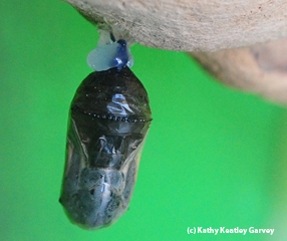
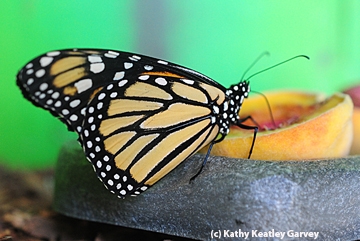
A middle-aged woman takes the sign literally. "What would you do if you saw THAT bug in our backyard?" she asks her daughter, about six years old.
"Yecch!" responds the daughter. She didn't say what she would do, but "survival" (hers, not the bug's) seemed to be the key issue.
They were looking at an assassin bug, considered a beneficial insect in the garden.
Now if those visitors were entomologists or bug enthusiasts, they'd probably begin the conversation with one of these three scenarios:
- "Ooh, there's an assassin bug! How lucky can we get!"
- "So beautiful! A work of nature, isn't it?"
- "Oh, wait, I'm going to shoot (photograph) it."
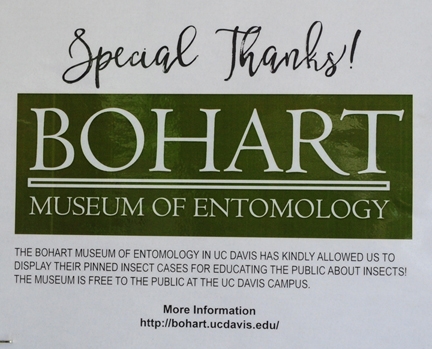
Butterflies? Check! The specimens include monarchs, Western tiger swallowtails, anise swallowtails, West Coast ladies, painted ladies, red admirals, and the pest, the cabbage white. (Note: according to Art Shapiro, UC Davis distinguished professor of evolution and ecology at UC Davis, there are more than 300 species of butterflies in California. See his monitoring site. "And 118 have been recorded at my Donner Summit study site alone. There are about 30 species breeding in Davis right now and probably 90+ in Yolo, Solano, or Sacramento County alone--about 100 in Colusa or Napa...")
Dragonflies and damselflies? Check.
Those misunderstood assassin bugs? Check.
Another display at the Bug Barn showcases the life cycle of a monarch, featuring live monarchs and a chrysalis. Visitors at the Insect Pavilion on Wednesday morning, July 26, seemed to like that display more than they did the others. "Oh, my, a live monarch!" Out came the cell phones for quick photos.
A bee observation hive from beekeeper Brian Fishback of BD Ranch and Apiary in Wilton also drew attention. Fishback began keeping bees in 2008 and worked at the Harry H. Laidlaw Jr. Honey Bee Research Facility, UC Davis, with bee breeder-geneticist Susan Cobey, now of Washington State University.
“Today we continue to share our knowledge with outreach programs to encourage interest in honey bees and share the importance of the bees to our environment as well as our food supply," Fishback wrote on his display. “At BD Ranch, I work very hard rescuing colonies from destruction from pest control companies, nervous homeowners, people unfamiliar with what bees are doing during swarming seasons. By rescuing and raising these feral colonies into strong hives, I can raise queens to carry the surviving genetic traits to other hives that increase their survival."
Meanwhile, just outside the Insect Pavilion, bees buzzed in the garden, unaware of the visitors expressing an interest in them. A honey bee foraged on a blooming sunflower, trailing, stopping, trailing...
Just as the humans were doing inside the Insect Pavilion...
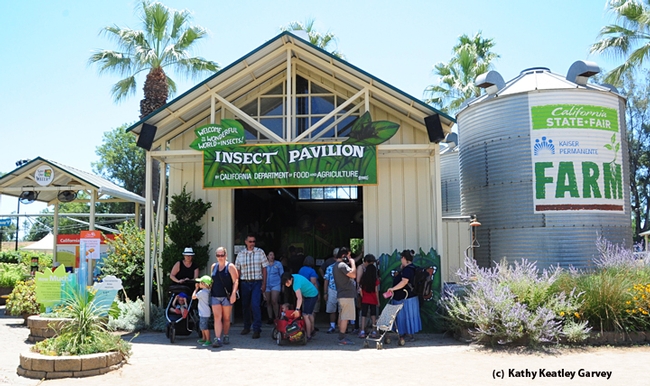
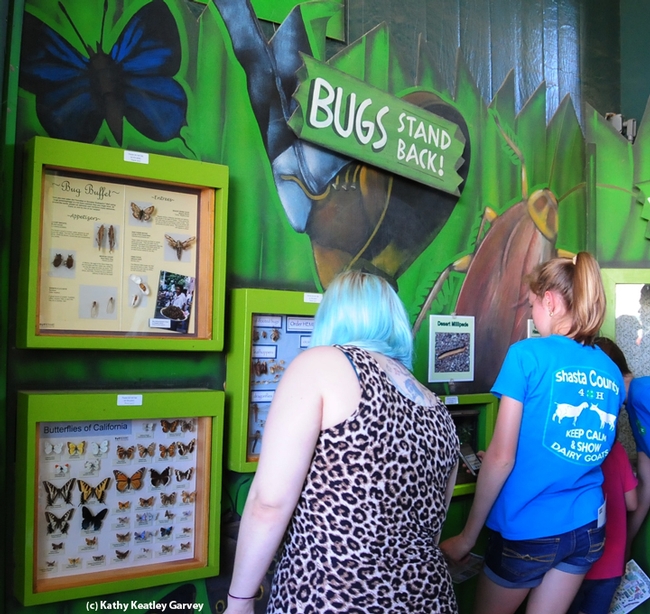
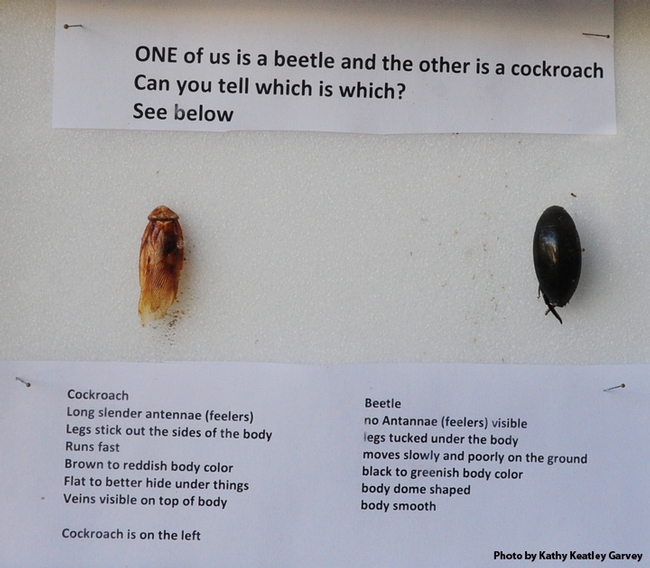
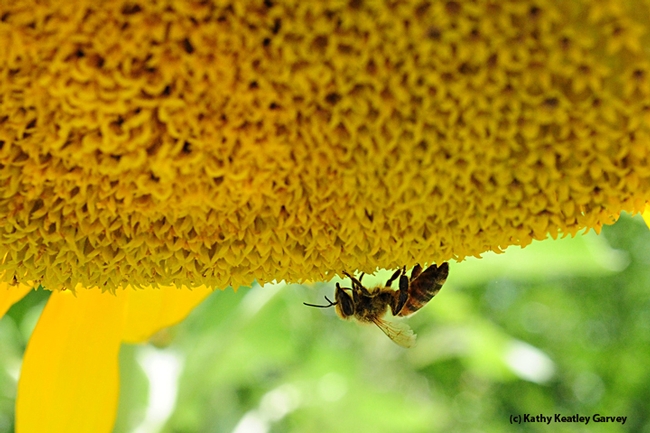
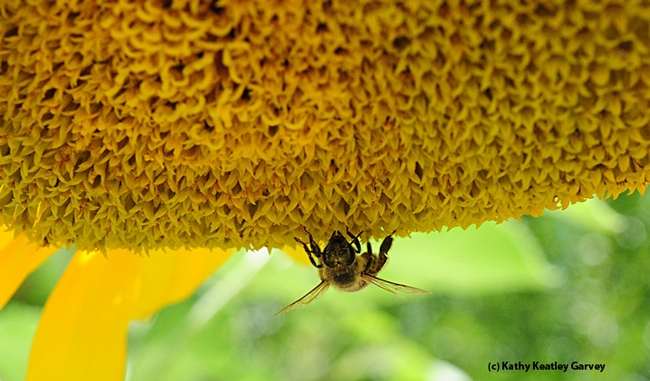
- Author: Kathy Keatley Garvey
What a delight to see.
We strolled through milkweed patches in the UC Davis Arboretum Thursday noon and saw them.
Monarchs!
The monarch butterflies (Danaus plexippus) are returning from their coastal California overwintering sites. And we're getting new generations.
The UC Davis campus, including the 100-acre UC Davis Arboretum is home to much celebrated flora and fauna, including milkweed and monarchs.
After overwintering along the California coast and in central Mexico, the butterflies flutter north into the United States and Canada in the spring and summer.
However, scientists report that the monarch population in central Mexico declined from 100 million last year to 78 million this year, due to late winter storms, coupled with cold and wet weather, and deforestration.
It's a sure sign of spring, through, when the monarchs return. It's a cause for celebration. Welcome back!
Meanwhile, we're anticipating the arrival of Christine Merlin, assistant professor in Texas A&M's Department of Biology, who will discuss her research on "The Monarch Butterfly Circadian Clock: from Clockwork Mechanisms to Control of Seasonal Migration" when she presents a seminar on Wednesday afternoon, May 31 at the University of California, Davis. The seminar is set from 4:10 p.m. to 5 p.m. in Room 122 of Briggs Hall. Host is molecular geneticist Joanna Chiu, associate professor and vice chair of the UC Davis Department of Entomology and Nematology.
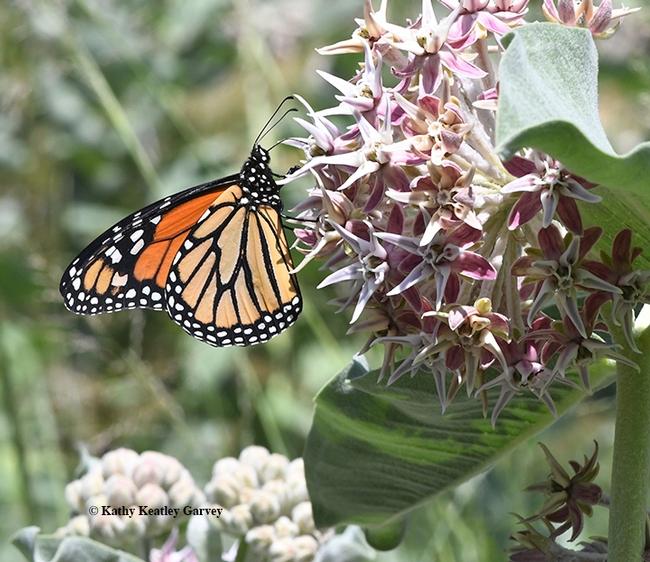
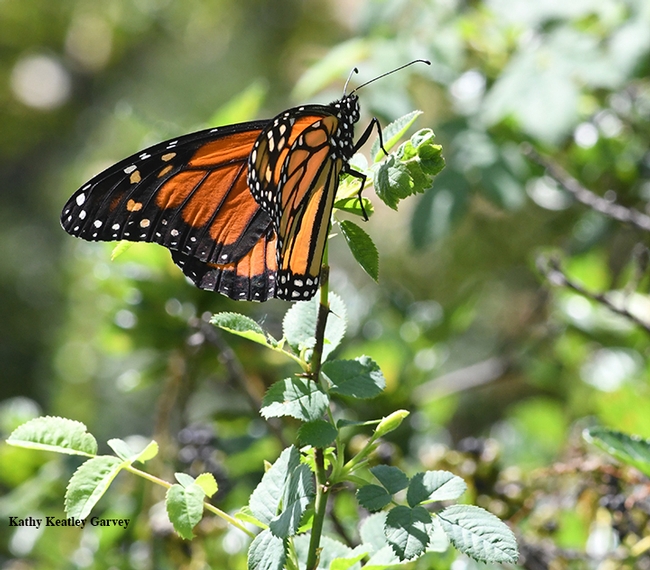
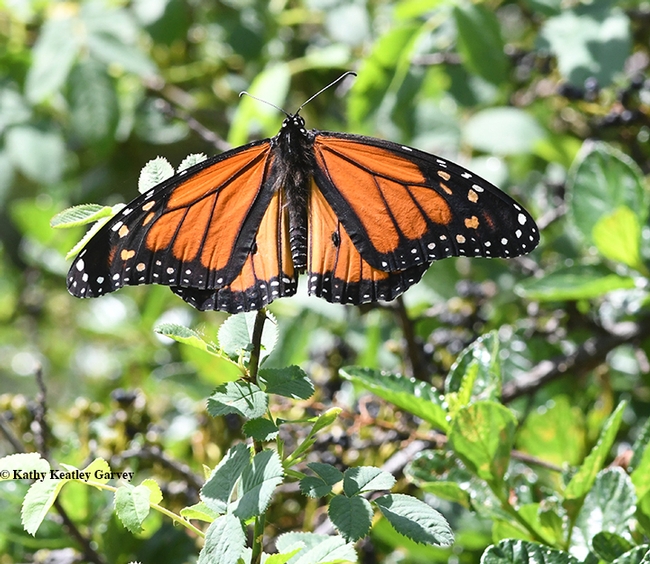
- Author: Kathy Keatley Garvey
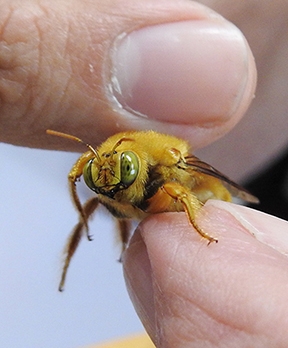
Despite other major attractions--including the gorgeous spring day and the March Madness basketball tournament--nearly 300 people visited the UC Davis Bohart Museum of Entomology last Saturday during its three-hour open house, themed "Eggs to Wings: Backyard Butterfly Gardening."
They conferred with Lynn Kimsey, director of the Bohart Museum and professor of entomology at UC Davis; Robbin Thorp, distinguished emeritus professor of entomology; Tabatha Yang, education and outreach coordinator; and a number of Bohart associates, including entomologist Jeff Smith, who curates the moth and butterfly display; naturalist Greg Kareofelas, a butterfly and dragonfly enthusiast; entomologists Jessica Gillung and Ziad Khouri, doctoral candidates; Nicole Tam, junior specialist; and Joel Hernandez and Alex Nguyen, recent entomology graduates.
"Hungry, hungry caterpillars!" read one poster, illustrated with photos of the monarch, gulf fritillary and pipevine swallowtail caterpillars and their adult stages. "Having a garden full of flowers provides nectar, an important food source for adult butterflies, but what about their hungry, hungry caterpillars? It seems counterintuitive to grow plants that yu want insects to eat, but that is exactly what butterflies need when they are larvae."
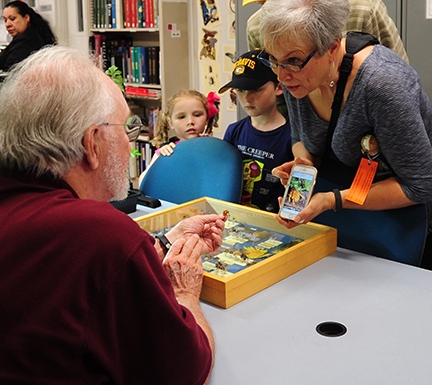
Jeff Smith kept busy showing visitors the drawers of butterfly specimens, including blue morphos, monarchs and swallowtails. As he opened one drawer, he explained that "this drawer contains several species of South American rainforest butterflies, Preponas, in the genus Archaeoprepona." He described them as "extremely strong and fast fliers, but they love to settle on baits such as fermenting fruit on the ground. We (Bohart team) caught several in the ongoing Belize biodiversity work this past year."
Robbin Thorp showed live male Valley carpenter bees, Xylocopa varipuncta, green-eyed blond bees that are also known as "teddy bear" bees. "Boy bees can't sting," Thorp said, reassuring a few leary visitors. The female of the species is solid black. (Following the open house, Thorp returned the bees to the UC Davis Department of Entomology and Nematology's Häagen-Dazs Honey Bee Haven on Bee Biology Road.)
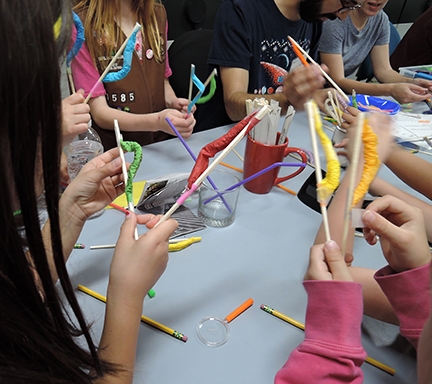
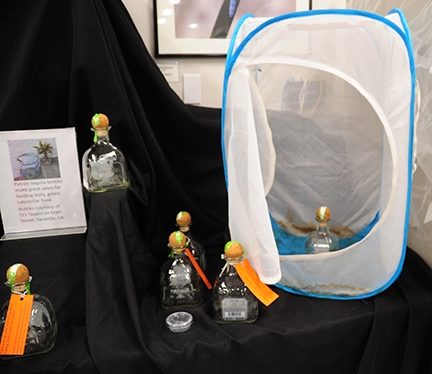
The bottle is tucked inside a zipped, meshed butterfly habitat and placed indoors or in a screened patio to prevent tachinid flies and wasps from laying their eggs in the caterpillars or chrysalids. Once the monarchs pupate and eclose, they are released to start another generation. This is a small-scale conservation project.
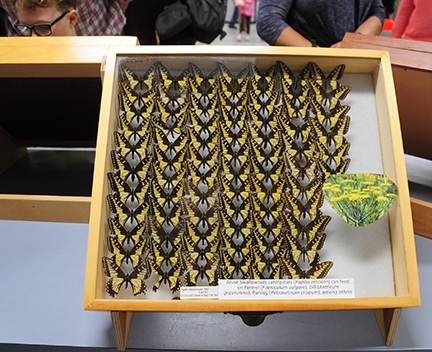
The Bohart Museum's regular hours are from 9 a.m. to noon and 1 to 5 p.m. Mondays through Thursdays. The museum is closed to the public on Fridays, Saturdays and Sundays and on major holidays. Admission is free. Special open houses take place throughout the academic year. The next open house takes place during the annual campuswide Picnic Day on April 22.
More information on the Bohart Museum is available by contacting (530) 752-0493 or bmuseum@ucdavis.edu. The website is http://bohart.ucdavis.edu/
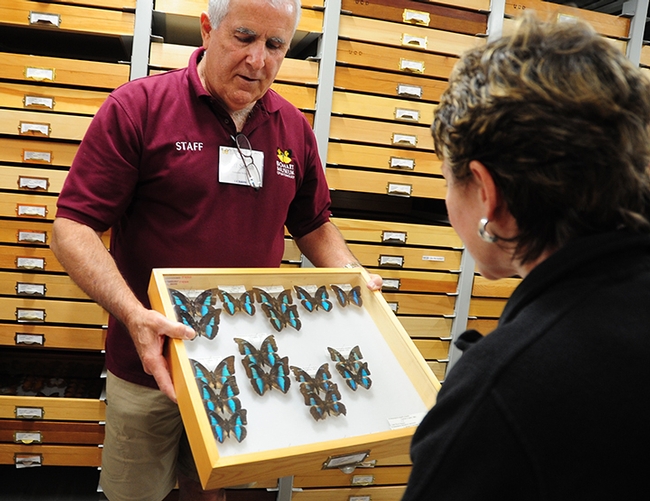
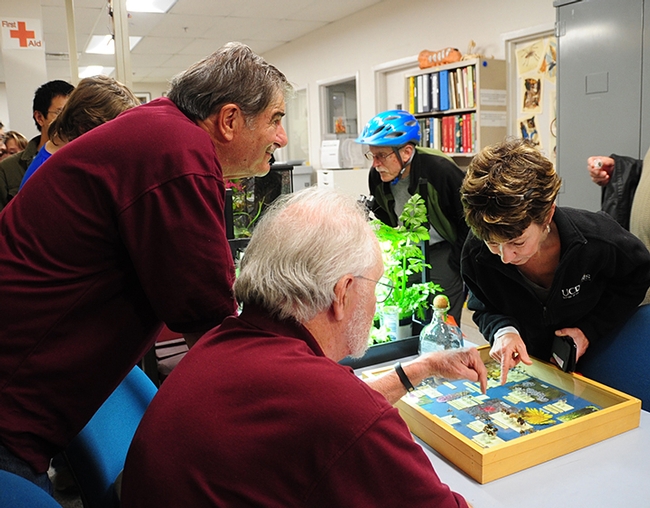
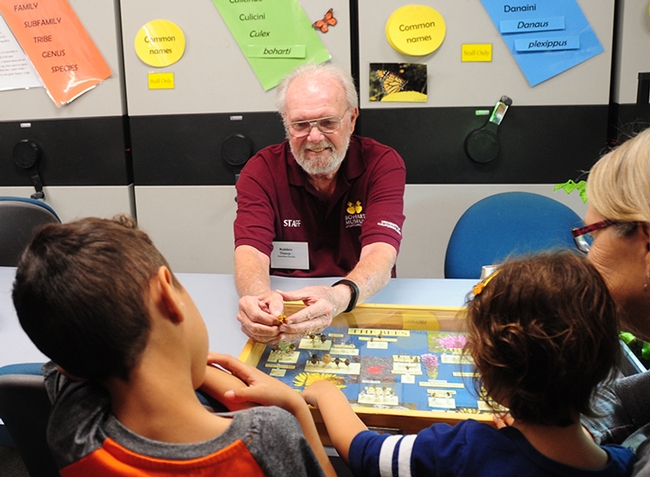
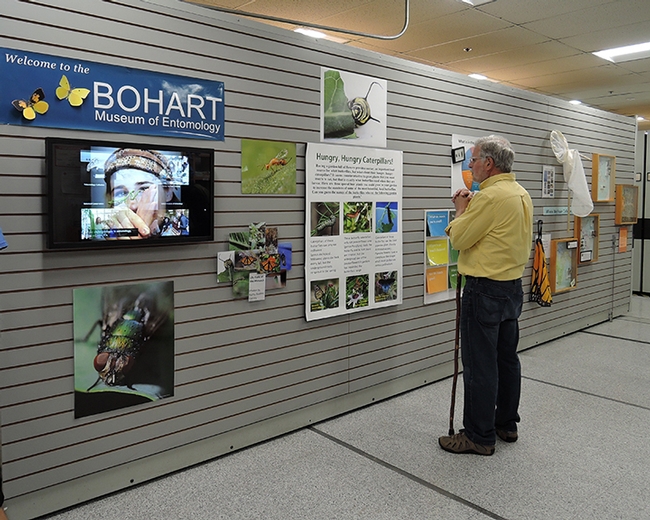
- Author: Kathy Keatley Garvey
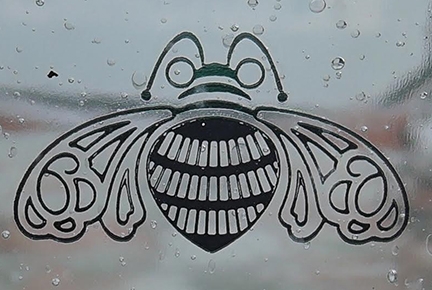
Think "Monarch Starter Set."
And it's just in time for open house at the Bohart Museum of Entomology from 1 to 4 p.m., Sunday, March 19 in Room 1124 of the Academic Surge Building, Crocker Lane, University of California, Davis. The open house, themed “Eggs to Wings: Backyard Butterfly Gardening,” is free and open to the public. There you'll learn ideas on how to garden for butterflies and perhaps…you may go home with a Monarch Starter Set.
The Monarch Starter Set?
- Take one zippered, meshed butterfly habitat container, available for purchase from the Bohart Museum of Entomology's gift shop (or you can buy a zippered meshed laundry bag elsewhere)
- Add one Patrón tequila bottle, selected because it is a sturdy, chunky bottle with a broad base and a narrow neck.
- Fill bottle with water.
- Add milkweed plants (from your backyard or found in the wild)
- Add monarch caterpillars (from your backyard or found in the wild)
- Place in no-fly zone area, such as inside your house or on a screened porch. That's to deter tachinid flies and the wasps that lay their eggs inside the caterpillars and chrysalids and kill the hosts
- Watch a caterpillar eat its fill, form a chrysalis, and then observe the monarch eclose
- Release the monarch and voila! You're doing your part to help the declining monarch population
Using this method, we reared and released 64 monarchs last year in our small scale conservation project. What's good about the Patrón tequila bottle: the heavy bottle won't tip over, the caterpillars won't drown, and the milkweed will stay fresh. However, be sure to change the milkweed every day to keep the food fresh and abundant for your caterpillars.
Thanks to generous donations from TJ's Tavern on Main Street, Vacaville, the Bohart Museum can now provide the bottles to a limited number of "Monarch Moms" and "Monarch Dads." The butterfly habitats are available in its gift shop for around $20. The bottles are a gift. (Note: Teetotalism runs in our family so when I say "I'm going to the bar," that comment usually draws a raised eyebrow and a giggle or chuckle until I add "umm, to get the Patrón tequila bottle donations.")
The bottles are also perfect for the Bohart's live petting zoo and other uses at the insect museum.
Not to be overlooked is the bee logo--pollinators matter!--on each Patrón tequila bottle. The Patrón Spirits Company, which produces the product in Mexico, chose a bee as its logo "because of the well-known attraction bees have to Weber blue agave," according to Reference.com. "Weber blue agave is the primary plant from which Patrón tequila is made.” Tequila, as most folks know, is made from heart or core of the blue agave plant.
The primary pollinator of the blue agave, however, is the greater long-nosed bat or Mexican long-nosed bat, Leptonycteris nivalis. The lesser long-nosed bat (Leptonycteris curasoae) also is a key pollinator. Check out Purdue entomologist Gwen Pearson's informative piece on "Tequila, Booze and Bats" on wired.com. It includes a link to a video of bats pollinating agave. This is a favorite pollinator subject especially during National Pollinator Week, which this year is June 19-25.
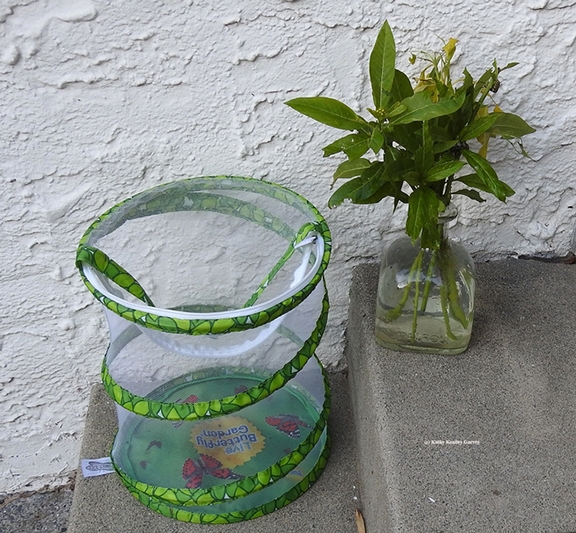
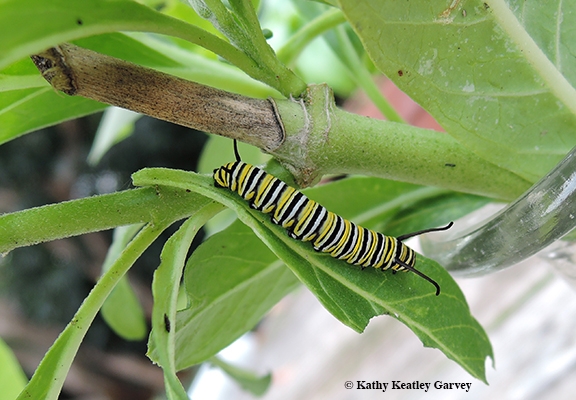
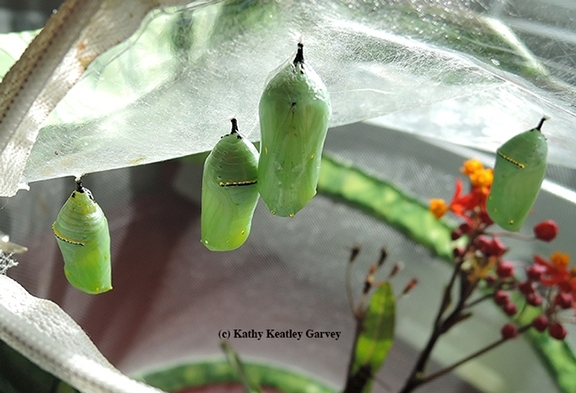
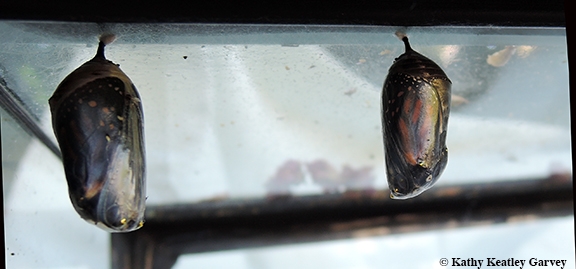
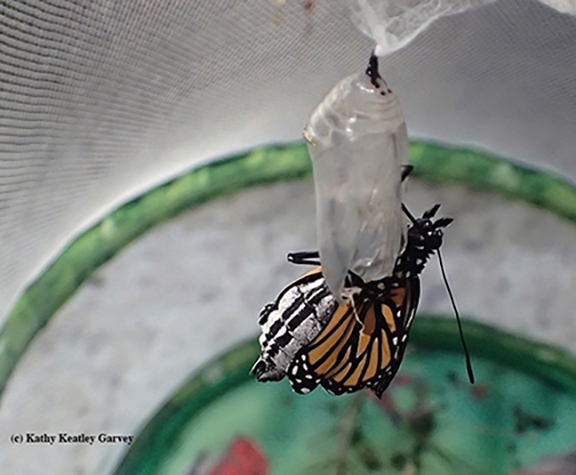
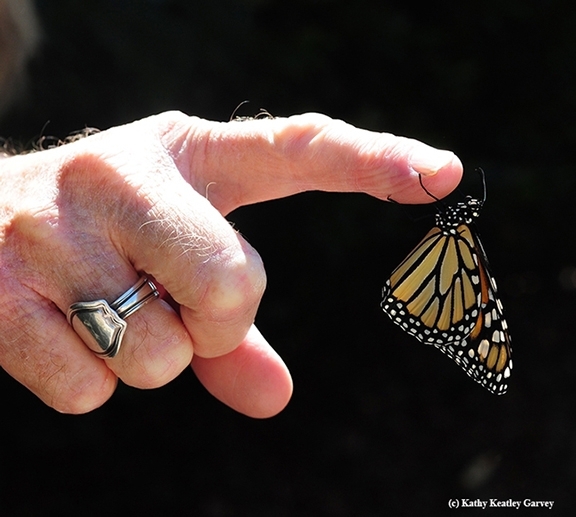
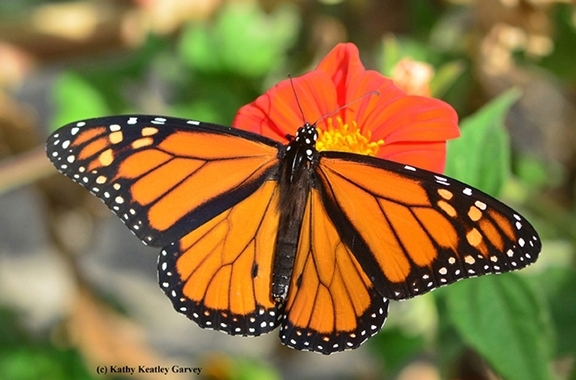
- Author: Kathy Keatley Garvey

He marveled at how a caterpillar turns into a butterfly and said that "science is full of surprises." One of the surprises: his basic research on insects led to a drug for blocking hypertension and neuropathic pain.
Now add Alzheimer's to that list.
This week Hammock announced that a drug developed in his lab yields hope for the prevention of Alzheimer's, a severe and chronic psychiatric disease that affects more than 350 million people worldwide.
Researchers at the Huazhong University of Science and Technology, Wuhan China, used the drug developed at UC Davis to show that the neurofibrillary pathology of an Alzheimer's disease-related protein could be dramatically reduced. Their work was published in December in the Journal of Huazhong University of Science and Technology.
“They further demonstrated the mechanism of action of the UC Davis drug in blocking the oxidative stress-driven phosphorylation events associated with Alzheimer's disease,” Hammock said. The UC Davis drug stabilizes natural anti-inflammatory mediators by inhibiting an enzyme called soluble epoxide hydrolase (sEH) discovered at UC Davis and recently spotlighted in the Proceedings of the National Academy of Sciences and the National Institutes of Health's PubMed.
“I was thrilled to see this paper on tau phosphorylation from Huazhong University shows that our drug could block a key event and a key enzyme called GSK-3 beta thought critical in the development of Alzheimer's disease,” said Hammock, who holds a joint appointment in the UC Davis Department of Entomology and Nematology and the UC Davis Comprehensive Cancer Center.
“We were planning to do this study, but having another laboratory do it with our compound was even better,” he said. “Since our publication last year in PNAS that showed UC Davis soluble epoxide hydrolase inhibitors both prevented and reversed depression, we have been excited about trying to block the development of Alzheimer's disease.”
The PNAS paper, “Gene Deficiency and Pharmacological Inhibition of Soluble Epoxide Hydrolase Confers Resilience to Repeated Social Defeat Stress,” was co-authored by a 13-member research team led by Hammock and Kenji Hashimoto of Chiba University Center's Division of Clinical Neuroscience, Japan. They found that sEH plays a key role in the pathophysiology of depression, and that epoxy fatty acids, their mimics, as well as sEH inhibitors could be potential therapeutic or prophylactic drugs for depression and several other disorders of the central nervous system. Co-authors of the paper included Hammock lab researchers Christophe Morisseau, Jun Yang and Karen Wagner. The National Institute of Environmental Health Sciences, National Institutes of Health, funded the research.
Hammock credited several UC Davis colleagues for their work leading to the publications. Research from the labs of Liang Zhang and Qing Li at the University of Hawaii--Qing is a former UC Davis doctoral student--pointed out some of the mechanisms involved in cognitive decline which associate professor Aldrin Gomes of the UC Davis Department of Neurobiology, Physiology and Behavior and Fawaz Haj of the UC Davis Department of Nutrition “have shown to be blocked by the natural metabolites stabilized by the UC Davis drugs,” Hammock said.
One of the Hammock lab drugs is moving toward human clinical trials for neuropathic pain through a Davis-based company, EicOsis, LLC, and the financial support of the Blueprint Program through NIH's National Institute of Neurological Disorders and Stroke. Hammock founded the company to develop inhibitors to the soluble epoxide hydrolase, a key regulatory enzyme involved in the metabolism of fatty acids, to treat unmet medical needs in human and animals.
“The clinical back-up candidate at EicOsis penetrates the blood brain barrier and should be a perfect compound to test if this class of chemistry can prevent cognitive decline and Alzheimer's disease,” Hammock said.
Meanwhile, I'm still thinking about that seminar, "From Butterflies to Blood Pressure and Beyond."
The "Beyond?"
Alzheimer's, a cruel disease characterized by progressive memory loss, language problems and unpredictable behavior issues.



